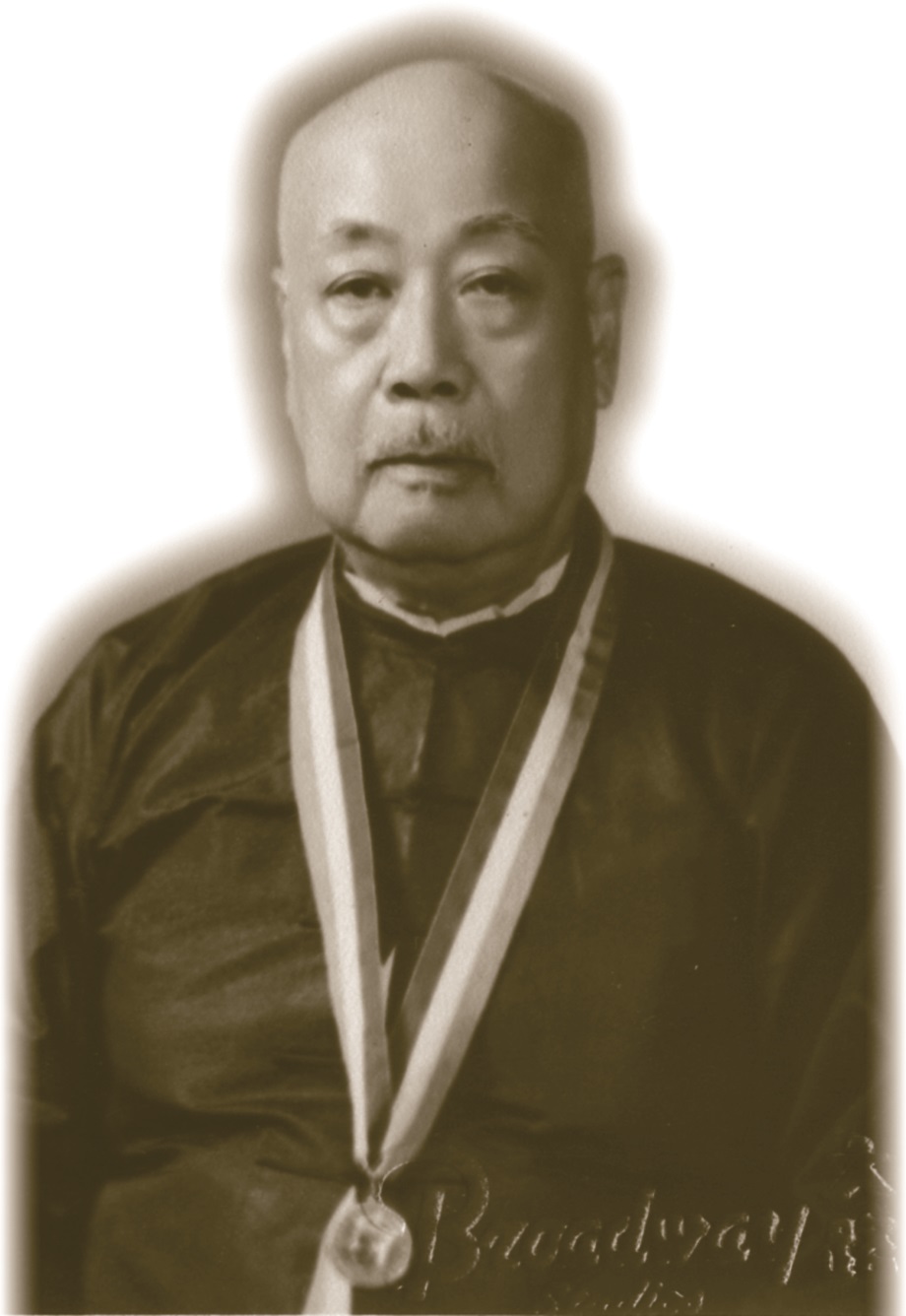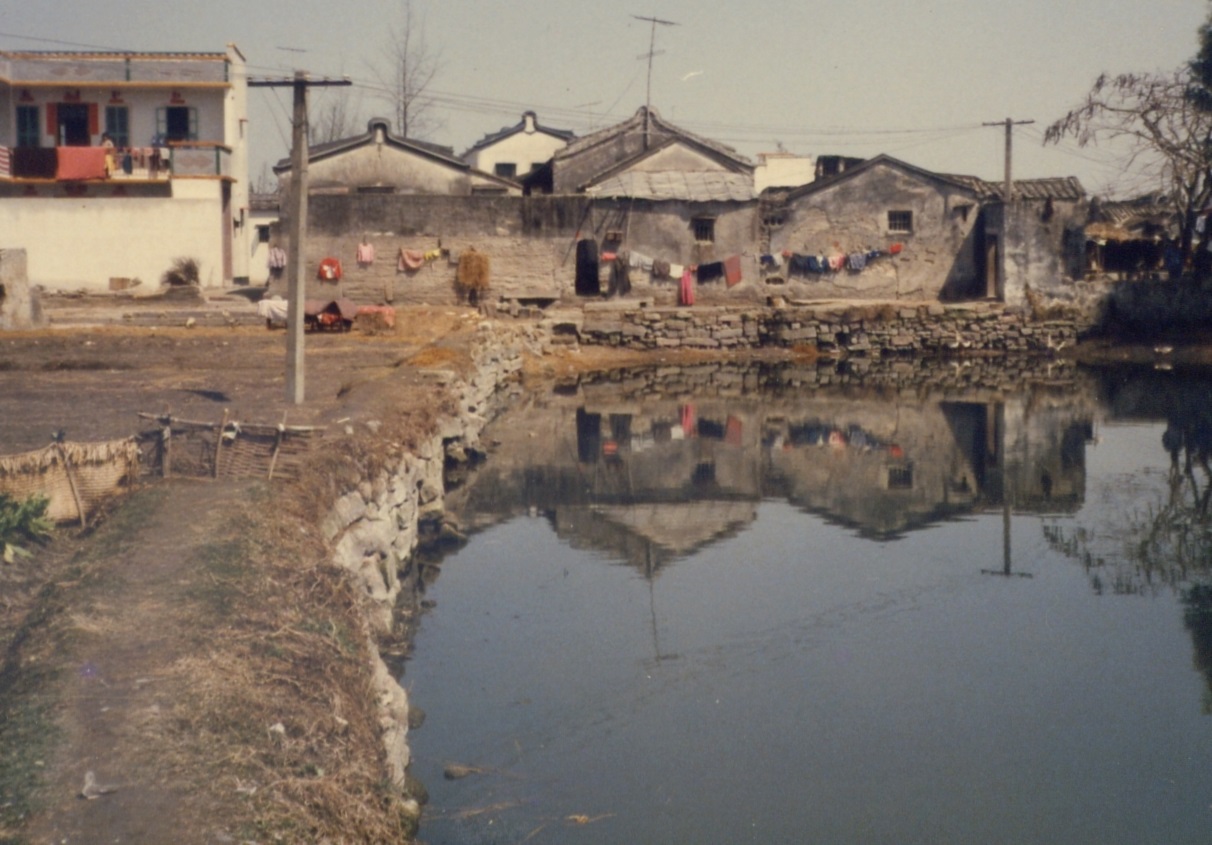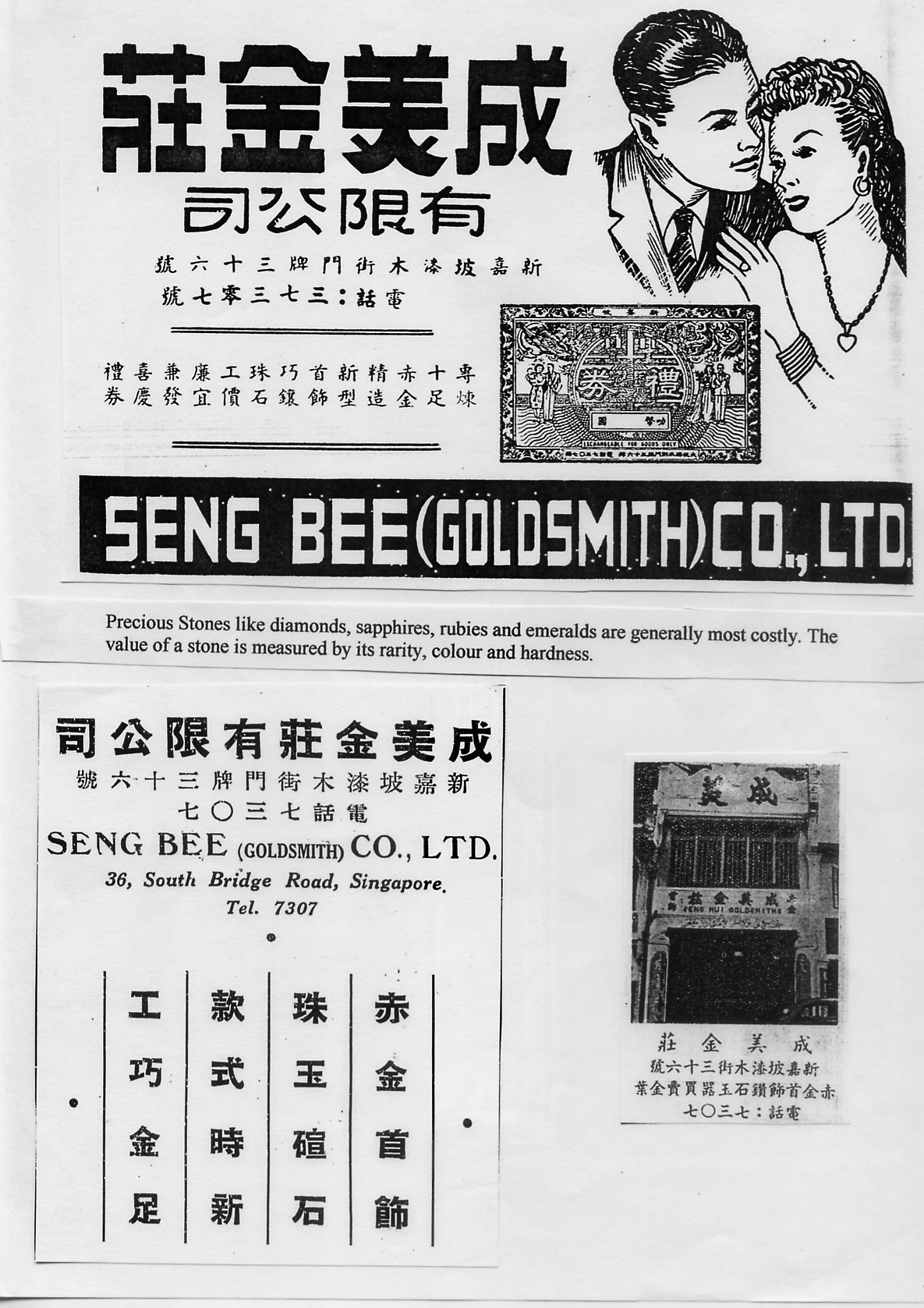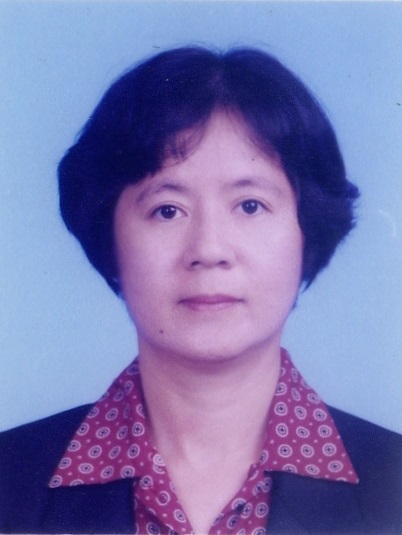A Glimpse of his Past: Yeo Chan Boon (1881–1967)
Researcher Yeo Guan Nor tells the story of her late grandfather, Yeo Chan Boon, who came to Singapore when he was 18 and later became one of the founding members of the Singapore branch of Sun Yat-sen’s Revolutionary Alliance (Tongmenghui).

I was too young to know my grandfather Yeo Chan Boon while he was still alive. He was in his twilight years when I was born. My earliest recollection of him was that of a stern-looking, balding old man who dressed well in his silk jacket and loose trousers. He wore a moustache and smoked cheroot. His large frame and demeanour exuded an aura of a refined and dignified gentleman. The patriarch of his large extended family living under one roof, he was often addressed by his workers and servants as “Ah Ya” (distinguished sir or towkay), by his children as “Ah Tia” (father), and to his brood of grandchildren, he was simply “Ah Kong” (grandfather).
Other than occasional outings with him, I do not remember any close encounters with my traditional grandfather. Etched vividly in my memories are visits to a holiday villa by the sea at East Coast. While I played, he sat quietly under a shady tree at the bungalow compound, soothed by the soft pounding waves just a distance away. At the Chui Huay Lim Club at Keng Lee Road, he would attend to his club activities while I was left to wander around and watch wayang on the open ground.
It was only through a visit to the Sun Yat Sen Nanyang Memorial Hall that I came to know he was one of the founding members of the Singapore branch of the Revolutionary Alliance (Tongmenghui), and that he shared Dr Sun Yat Sen’s vision for a new China. What was his involvement and role in helping to topple the Qing dynasty in 1911?
This sparked my desire to find out more about my grandfather and to understand his role as a huaqiao (China-born overseas Chinese) in Singapore.
Yeo Chan Boon was raised in a modest home. He had a good upbringing under the care of his parents who loved him well. Truthfulness, integrity and goodness formed the essence of his growing up years in a rural village.
In school, he was educated in the old literary language (wen yan) and read the “Four Books” and “Five Classics”, writing calligraphy and reciting poems. He received tremendous encouragement from his mother who valued learning. Determined to excel in his studies, he put in great effort to achieve his goals.
At the age of 18, Yeo had to leave home for the first time in his life. Though apprehensive about facing an alien environment, he did not back out. He left Wen Li village in Teo Ann county to join his father in Singapore. He bade farewell to his family, loved ones and to the simple pleasures of his daily life.

At the city port of Shantou, he joined fellow countrymen aboard the “fish-eye” Chinese junk and set sail to their destination. The high seas were rough, food was minimal and crammed living conditions were almost unbearable. It was a perilous journey they endured.
After a tedious voyage, he disembarked at the seafront of Telok Ayer. He settled down quickly at Boat Quay, where his father had a cloth piece goods shop. Young and energetic, he worked hard in the trade and learnt the ropes in no time. At every opportunity, he sought to understand the economic and social conditions under the colonial rule at that time. He had plans to go into other business sectors.
Though he faced years of struggle and hardship, he thrived nonetheless in the bustling and fast growing city. With accumulated savings and trading experience, he became a pioneer in the entrepot trade. He became a merchant and started to import agro-commodities from Indonesia and other neighbouring countries. These goods had to be sorted, graded and packaged before being exported to overseas markets.
Gum Copal, Gum Damar (Mata Kuching) and ox-hides were the bulk goods he supplied. From humble beginnings at Boat Quay, he expanded his business, and his company, Yong Guan Seng & Company Limited was re-located to a row of shophouses at Ord Road.
With his business acumen and far-sightedness, Yeo eyed the jewellery trade, which he thought commercially viable. His new venture turned out to be rewarding. Seng Bee (Goldsmith) Company Limited, as it was called, was situated along South Bridge Road in Chinatown. It was well patronised and became one of the largest and most well-known Teochew establishments in the jewellery industry.

He also had other financial investments in banking, rubber and general produce companies. He was one of the founding groups of Teochew merchants who pooled their resources to establish Sze Hai Tong Banking and Insurance Company, the second-oldest Chinese bank founded in Singapore. When Overseas Union Bank Limited was set up, he became one of its shareholders. Two local companies he had some holdings in were Tai Thong Rubber Works Limited and Yong Tai Produce Company.
Apart from devoting his time to business, he took an active interest in the wellbeing of the Chinese community. He played an active role in many community-wide voluntary associations and immersed himself indefatigably in social, educational and cultural work.
As a young elected councillor in the Singapore Chinese Chamber of Commerce, he was responsible for drafting the constitutional rules, and started a membership campaign in 1906. Throughout his tenure in the Chamber, he undertook multifarious tasks, serving in the Finance, Education and Joint Relief Committees. Most significantly, he represented the interests of the business community and engaged in many campaigns for political rights, citizenship for overseas Chinese, the development of Chinese education and relief fundraising.
Yeo was one of the early pioneers who set up the Singapore Gold & Silver Merchants Association (now known as Singapore Jewellers Association), which provided a platform for cooperation among merchants of different Chinese dialect groups in the jewellery trade. He saw to the welfare of its members and helped raise funds to purchase their own office premises.
In Ngee Ann Kongsi, Teochew Poit Ip Huay Kuan, Singapore Kwantung Association and The Federated Teochew Associations of Malaysia, Yeo played pivotal roles at the helm. He was enthusiastic about fostering unity, mutual assistance and the social welfare of the community at large. An advocate of education, he helped to raise funds for establishing Chinese-medium primary and middle high schools, and sat on the board of these educational institutions: Tuan Mong High School, Ngee Ann Girls’ School and Chinese High School. He was also actively engaged in the Federation of Chinese School Teachers and Directors of School Boards.
He gave moral and monetary support to the general interests of his clansmen at the dialect/district associations. As patron, he helped to promote Chinese traditions, customs and culture at the Yang Clan General Association, Singapore Teochew Hong Long Yeo Clan Association, Teo Ann Huay Kuan, and the Er Woo Amateur Musical and Dramatic Association.
At the Thong Chai Medical Institution, a charitable organisation which provided free medical services to the poor, he served on the board and was involved in fundraising and welfare projects.
Yeo was nominated to sit on the Chinese Advisory Board which was a consultative body in the colonial days. Together with other dialect representatives, he gave views and feedback on education, legislation and other pertinent issues affecting the local Chinese. He also took up the position of advisor to the Overseas Chinese Affairs Commission (Nationalist Government based in Nanjing), which administered affairs relating to overseas Chinese nationals. Both were politically inclined high-level appointments.
As a patriot, he believed in the liberation of China and was fervent in his commitment to revolutionary activities, with the launch of Tongmenghui (a branch of the Revolutionary Party set up by Sun Yat-sen) in 1906. He was one of the 14 founding members who set the pace and direction of this nationalistic movement in Singapore, and helped to raise funds for the many uprisings which finally toppled the Qing government in 1911.
Since the Japanese onslaught on Chinese soil in 1928 culminating with the atrocious attacks on Nanjing in 1937, Yeo joined many outraged China-born nationals in the Salvation Campaign. He ardently rallied compatriots to raise relief funds for the many victims who suffered in China. Hard-driven and demonstrative, he was among the zealous lot who tirelessly collected monthly and special donations for the Shantung Relief Fund (1928–29), Singapore China Relief Fund (1937–41) and the South Seas China Relief Fund (1938–49). His devotion extended to contributing his own money to fund the salaries and miscellaneous expenses of the staff at Ee Hoe Hean Club (a millionaires’ club), which was the headquarters of these fundraising activities.
When Singapore was on the verge of attack by the Japanese at the end of December 1941, the colonial government mobilised the help of residents to undertake emergency measures to deal with the worsening situation in Singapore. Yeo sat on the Standing Committee which was the key executive and policymaking body, comprising members of the Chinese Chamber of Commerce, the Kuomintang, the Malayan Communist Party and other various prominent groups. Known as the Singapore Chinese Mobilisation Council, its aim was to recruit volunteers to help maintain law and order, spread anti-Japanese messages and join various overseas counter-attack missions. It was a chaotic period but Yeo pressed on, rendering whatever assistance was needed.
The British, Australian, Indian and local defence forces collapsed eventually and on 15 February 1942, Singapore fell into the hands of the Japanese. Fear and terror gripped the population. Like many residents in dire straits, Yeo was just as helpless and despondent. Many who had the means had already fled the country.
The Japanese military began to weed out the anti-Japanese elements and many men aged 18–50 years were rounded up. Yeo was one of the many prominent businessmen arrested and put into prison, as he was categorised as an activist in the “Save China” movement against Japan. Later, he was released and forced to collaborate with the Japanese military leaders and become a member of the Syonan Overseas Chinese Association (SOCA), which was a complaisant machinery. They had to report daily at the Goh Loo Club, which became the headquarters of this new grouping. An onerous task befell the committee members: they were told to raise a large sum of money and pledge loyalty and sincerity to the Japanese. In compliance, Yeo toiled with members of the team to meet the demands of their new masters.
Yeo and SOCA members also played a vital role in charity work. They granted relief to the orphans and widows who had been rendered destitute or homeless during the war, ran a home for the poor and aged who had no means of subsistence. Participation in campaigns launched by the Japanese were also part of their daily routine. In other areas of work, he was put on the New Syonan Construction Committee as Assistant Head of the Finance Section. The Japanese had plans to build a new Syonan village in Endau, Malaya.
The Japanese Occupation lasted three and a half years, and ended in August 1945. Yeo had suffered and sacrificed much during this difficult period. There were indelible pains and agonies which formed another chapter of his life.
With the Japanese surrender and the return of British rule, he had to go about rebuilding his family life and revitalising business resources. There was lost time to be regained. In June 1946, when the Appeals Committee for Singapore Chinese Victims Massacred by Japanese was formed, he was appointed its vice-chairman. The committee was set up to investigate losses of victims, excavation of remains of victims and demands for compensation. Though the war years had worn him down, he still took on this heavy responsibility.
In January 1953, when Nanyang University was mooted by the Hokkien community leaders, he was among the ardent supporters who backed the proposal. It was a mammoth and ambitious project. Yeo played a crucial role since its foundation stone was laid. He was a member of the Preparatory Committee and served in the budget, donations and student enrolment sub-committees during the planning and construction phase. He was also appointed to the Executive Committee which governed, directed and decided all matters pertaining to the administration of the affairs of the university in the early years.
A man with an intensity of purpose, Yeo Chan Boon epitomised the spirit of generosity, compassion and devotion. He was a humanitarian at heart and his motto was “ready to serve for a good cause”.
He is remembered as a dedicated and benevolent huaqiao (China-born overseas Chinese) who left the shores of his “motherland” and made his mark in Singapore. His contributions to the social and economic development in the pre-independence days of Singapore are manifold and impressive.
Among the various sources, library patrons who are researching on their own family history often consult materials such as local newspapers from the early 19th century, government and commercial directories, yearbooks and souvenir magazines by schools, business associations and government agencies.
To assist patrons who would like to start their own family history research, the Library has recently compiled, Sources on Family History – A Select Bibliography.
It lists the resources available at the Library and contains some instructions on how to start your search. You can collect a copy of this bibliography at the Lee Kong Chian Reference Library.
The Library is open from Monday to Sunday between 10am to 9pm (except public holidays). If you have any reference enquiries, you can email ref@nlb.gov.sg.
We also welcome donations of materials relating to family history (such as yearbooks and souvenir magazines). Feel free to contact us at 6546 7275 or 6546 7271 if you would like to do so.

Independent Researcher
REFERENCES
English Titles
Ban Kah Choon, Absent History: The Untold Story of Special Branch Operations in Singapore 1915–1942 (Singapore: Raffles, 2001). (Call no. RSING 327.125957 BAN)
Chinese High School (Singapore), The Chinese High School Magazine. (Singapore: Chinese High School, [19–]). (Call no. RCLOS q373.5957 CHSM)
Chuang Hui-Tsuan, Malayan Chinese Resistance to Japan 1937–1945: Selected Source Materials Based on Colonel Chuang Hui-Tsuan’s Collection (Singapore: Cultural & Historical Pub. House, 1984). (Available via PublicationSG)
Grace Loh and Lee Su Yin, Beyond Silken Robes (Singapore: Times Academic Press 1998). (Call no. RSING 338.0409225957 LOH)
Melanie Chew, Leaders of Singapore (Singapore: Resource Press, 1996). (Call no. RSING 920.05957 CHE)
Richard Lim, Building a Singapore Bank: The OUB Story (Singapore: Overseas Union Bank Limited, [1999]). (Call no. RSING 332.1095957 LIM)
Tan Beng Luan and Irene Quah, The Japanese Occupation 1942–1945: A Pictorial Record of Singapore During the War (Singapore: Times Editions, 1996). (Call no. RSING 940.5425 TAN-[WAR]
Victor Sim, ed., Biographies of Prominent Chinese in Singapore (Singapore: Nan Kok Pub., 1950). (Call no. RCLOS 920.05957 SIM)
Yong Chin Fatt, Chinese Leadership and Power in Singapore (Singapore: Times Academic Press, 1992). (Call no. RSING 959.5702 YON-[HIS])
Chinese Titles
Chao An Guild Hall 潮安会馆, Chao an huiguan hui xun 潮安会馆会讯 [Newsletter from Chaoan Guild Hall] (Xinjiapo 新加坡: Chao’an hui guan 潮安会馆, 2002). (Call no. Chinese RSING 369.25957 CAHGHX)
Er Woo Amateur Musical & Dramatic Association 馀娱儒乐社, Liu shi zhou nian ji nian te kan 六十周年纪念特刊 [60th anniversary special issue] (Xinjiapo 新加坡: [n.p.] [出版 社缺], 1978). (Call no. Chinese RCLOS 790.206 EWA)
Er Woo Amateur Musical & Dramatic Association 馀娱儒乐社, Yu yu ru yue she cheng li ba shi zhou nian ji nian te kan 馀娱儒乐社成立八十周年纪念特刊 (Er Woo Amateur Musical & Dramatic Association 80th anniversary souvenir magazine) (Xin jia po 新加坡: [Gai she] [该社], 1992). (Call no. Chinese RSING 792.50605957 ER)
Huang Jinying 黄今英主, Duan meng zhong xue qi shi zhou nian ji nian kan 端蒙中学七十周年纪念刊 [Tuan Mong High School 1906–1976] (Xinjiapo 新加坡: Duan meng zhong xue 端蒙中学, 1976). (Call no. Chinese RSING 373.5957 TUA)
Huang Yihua 黄溢华, Yi he xuan jiu shi zhou nian ji nian te kan, 1895–1985 怡和轩九十周年纪念特刊, 1895–1985 [Jardine Heen 90th anniversary special booklet 1895–1985] ([Xinjiapo] [新加坡] : Da shui niu chu ban ji gou 大水牛出版机构, 1985). (Call no. Chinese RSING 369.25957 YHX)
Law Wing Hang 罗永亨, ed., Xin jia po zhong hua zong shang hui ba shi zhou nian ji nian te kan 新加坡中华总商会八十周年纪念特刊 [Singapore Chinese chamber of Commerce & Industry 80th anniversary souvenir] (Xin jia po 新加坡: Chen qi you 陈启祐, 1986). (Call no. Chinese RSING 380.10655957 SIN)
Li Guseng 李谷僧, ed., Xin jia po duan meng zhong xue wu shi zhou nian ji nian kan 新加坡端蒙中学五十周年纪念刊 [Singapore Tuan Meng secondary school 50th anniversary commemorative publication] (Xin jia po 新加坡: Xin jia po duan meng zhong xue 新加坡 端蒙中学, 1956). (Call no. Chinese RCLOS q373.5957 XJP)
Lin Wendan and Feng Qinglian 林文丹 and 冯清莲, Xinjiapo zong xiang hui guan shi lue 新加坡宗乡会馆史略 [History of Clan Associations in Singapore] (Xinjiapo 新加坡: Xinjiapo zong xiang hui guan lian he zong hui 新加坡宗乡会馆联合总会, 2005). (Call no. Chinese RSING q369.25957)
Luo Ziwei 罗子葳, Xinjiapo Zhonghua zong shang hui qing zhu zuan xi ji nian te kan 新加坡中华总商会庆祝钻禧纪念特刊 [Chinese Entrepreneur Association celebrates diamond jubilee special issue] ([Xinjiapo 新加坡: Shang you chu ban gong si 商 友出版公司, 1966]). (Call no. Chinese RCLOS 381.06095957 SIN)
Nanyang Society 南洋学会, Nanhai xuehui zazhi 南洋学__报 [Journal of the South Seas Society] (1940–). (Call no. Chinese RSING 959.005 JSSS)
Singapore Chinese Chamber of Commerce & Industrial 新加坡中华总商会, Xinjiapo Zhonghua zong shang hui da sha luo cheng ji nian kan 新加坡中华总商会大厦落成纪念刊 [Singapore Chinese Chamber of Commerce and Industry Building commemorative publication] (Xinjiapo 新加坡: [n.p.] [出版社缺], 1964). (Call no. Chinese RCLOS 380.10655957 SIN)
Singapore Chinese Chamber of Commerce 新加坡中华总商会, Ji nian te kan: Di 60 zhou nian–1967 纪念特刊: 第60周年–1967 [60th Anniversary–1967] (Xinjiapo 新加坡: [n.p.] [出版 社缺], 1967–). (Call no. Chinese RCLOS 381.095957 CCCS)
Singapore Kwangtung Huay Kuan 新加坡广东会馆, Guangdong hui guan qing zhu liu shi zhou nian ji nian: 1937–1997 广东会馆庆祝六十周年纪念: 1937–1997 [Cantonese Huay Kuan celebrates its 60th anniversary: 1937–1997] (Xinjiapo 新加坡: Xinjiapo Guangdong hui guan 新加坡广东会馆, [19–]). (Call no. Chinese RSING 369.25957 GDH)
Singapore Teo Ann Lien Ngee Seah 新加坡潮安联谊社, Xinjiapo chao an lianyi she jinian tekan.1952 nian–di 15 zhou nian– 新加坡潮安联谊社纪念特刊. 1952年–第15周年- [Singapore Teochew Association commemorative special issue. 1952–15th anniversary–] (Xinjiapo 新加坡: [n.p.] [出版社缺], 1952–). (Call no. Chinese RCLOS 369.25957 STALNS)
Teo Chew (Poit Ip) Huay Kuan 潮州八邑会馆, Ji nian te kan: di si shi zhou nian–1969 纪念特刊: 第40周年–1969 [Commemorative special issue: 40th anniversary–1969] (Xinjiapo 新加坡: Chaozhou ba yi hui guan 潮州八邑 会馆, 1969–). (Call no. Chinese RCLOS 369.25957 TCPIHK)
Thong Chai Medical Institution 同济医院, Tongji yiyuan dasha luocheng jinian tekan 1979 同济医院大厦落成纪念特刊 [Tongji hospital building completion commemorative special issue] (Xinjiapo 新加坡: [Gai yuan chu ban wei yuan hui] [该院出版委员 会], 1979). (Call no. Chinese RSING 362.12095957 THO)
Thong Chai Medical Institution Library 同济医院 中医药图书馆, Tong ji yi yuan zhong yi yao tu shu guan shou ce 同济医院中医药图书馆手册 [Tongji hospital traditional chinese medicine library handbook] (Xin jia po 新加 坡 : [该医院] [Gai yi yuan], 1979). (Call no. Chinese RSING 027.662 THO-[LIB])
Thong Chai Medical Institution (Singapore) 同济医院 (新加坡), Xinjiapo tong ji yi yuan yi bai zhou nian ji nian te kan 新加坡同济医院一百周年纪念 特刊 [Singapore Tong Chai Hospital 100th anniversary special issue] (Xinjiapo 索书号: Tong ji yi yuan bai nian te kan chu ban wei yuan hui 同济医院百年特刊出版委员会, 1967). (Call no. Chinese RCLOS q362.11095957 THO)
Thong Chai Medical Institution 同济医院, Di jiu shi san zhi jiu shi liu zhou nian gai kuang hui ji 第九十三至九十六周年概况汇辑 [93rd to 96th anniversary fact sheet] (Xin jia po 新加坡: [n.p. identified] [出版社缺], 1968). (Call no. Chinese RDTYS 610.95957 TCM)
Thong Chai Medical Institution (Singapore) 新加坡同济医院, Tong ji yi yuan hui yuan 同济医院会员名录 [Singapore Tong Chai Hospital] (Xin jia po 新加坡: Ma hua yin shua gong si 马华印刷公司, 1961). (Call no. Chinese RCLOS 362.12095957 SIN)
Thong Chai Medical Institution (Singapore) 新加坡同济医院,Xinjiapo tong ji yi yuan 135 zhou nian ji nian te kan: 1867–2002 新加坡同济医院135周年纪念特刊: 1867—2002 [Singapore Tong Chai Hospital 135th anniversary special issue: 1867–2002] ([Chu ban di que 出版地缺 : Chu ban she que 出版社缺], 2002). (Call no. Chinese RSING 610.951 SIN)
Thong Chi Medical Institution 新加坡同济医院, Xin jia po tong ji yi yuan yi bai zhou nian ji nian te kan 新加坡同济医院一百周年纪念特刊 [Tongji Hospital commemorative special issue] (Xin jia po 新加坡: [n.p.] [出版社缺], 1970). (Call no. Chinese RCLOS 362.95957 STCMI)
Tuan Mong High School 端蒙中学, Duan meng zhong xue … bi ye ji nian kan 端蒙中学 … 毕业纪念刊 [Tuan Mong High School graduation souvenir magazine] (Xinjiapo 新加坡 : Tuan Mong High School 端蒙中学, 1979–) (Call no. Chinese RCLOS 373.5957 TMHS)
Tuan Mong High School 端蒙中学, Duan meng zhong xue qi shi wu zhou nian xiao qing te kan 端蒙中学七十五周年校庆特刊 [Tuan Mong High School 75th anniversary celebration souvenir magazine] (Xinjiapo 新加坡: [Gai zhong xue] [该 中学], 1981). (Call no. Chinese RLOS 373.5957 TUA)
Xu Yunqiao and Cai Shijun 许云樵 and 蔡史君, Xin Ma Hua ren kang Ri shi liao 1937–1945 新马华人抗日史料 1937–1945 [Malayan Chinese resistance to Japan 1937–1945] (Xinjiapo 新加: Wen shi chu ban gong si 文史出 版公司, 1984). (Call no. Chinese RSING 959.57023 MAL-[HIS])
Yang shi da sha luo cheng dian li ji nian te kan, 1985 杨氏大厦落成典礼纪念特刊, 1985 [Yeo’s Building opening ceremony souvenir magazine, 1985] ([Xinjiapo 新加坡]: Yang shi da sha luo cheng dian li gong zuo wei yuan hui] 杨氏大厦落成典礼工作委员会, 1985). (Call no. Chinese RSING q369.25957 YEO)
Yu yu ru yue she cheng li ba shi wu zhou nian ji nian 余娱儒乐社成立八十五周年纪念 [85 anniversary Er Woo Amateur Musical & Dramatic Association] (Xin jia po 新加坡: [Gai she] [该社], 1997). (Call no. Chinese RSING 792.50605957 EIG)
Yu yu ru yue she cheng li qi shi wu zhou nian ji nian te kan 余娱儒乐社成立七十五周年纪念特刊 [Er Woo Amateur Musical & Dramatic Association 75th anniversary, 1912–1987] (Xin jia po 新加坡: [Gai she] [该社], 1987). (Call no. Chinese RSING 792.50605957 ER)
* Note: To consult materials with prefixes “RCLOS” and “RDTYS”, kindly make your request at Level 11 of the Lee Kong Chian Reference Library.

